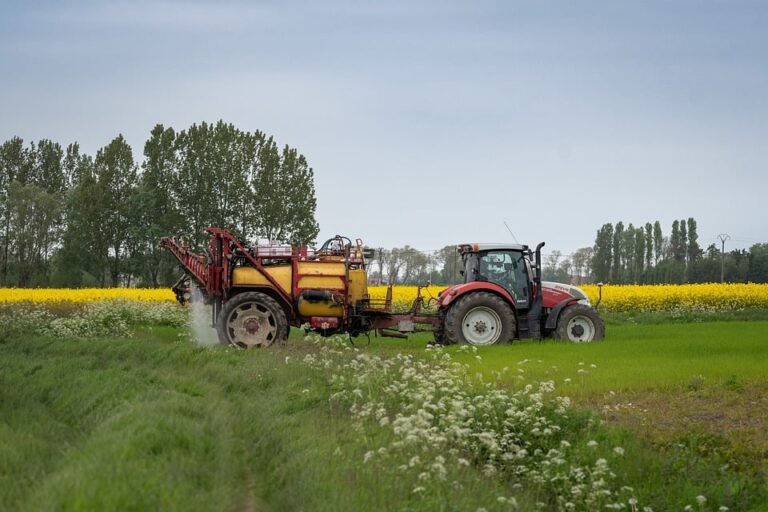Introduction
Rekshino agriculture, also known as regenerative agriculture, is a farming method that focuses on restoring soil health and promoting biodiversity. This holistic approach to farming not only aims to increase crop yield but also to ensure the long-term sustainability of food production. In this article, we will explore the benefits of Rekshino agriculture for sustainable food production.
Benefits of Rekshino Agriculture
1. Soil Health
One of the key benefits of Rekshino agriculture is its focus on improving soil health. Through practices such as cover cropping, crop rotation, and minimal tillage, Rekshino farmers are able to increase soil organic matter and nutrient levels. This results in healthier soils that are better able to retain water, support a diverse range of microorganisms, and produce higher quality crops.
2. Biodiversity
Another important benefit of Rekshino agriculture is its promotion of biodiversity on the farm. By using diverse crop rotations, intercropping, and agroforestry practices, Rekshino farmers are able to create ecosystems that support a wide range of plants, insects, and other wildlife. This not only helps to improve the overall health of the farm but also provides important ecosystem services such as pollination and pest control.
3. Climate Resilience
In the face of climate change, Rekshino agriculture offers a more resilient alternative to conventional farming practices. By building healthy soils and promoting biodiversity, Rekshino farmers are better able to adapt to extreme weather events such as droughts and floods. This resilience is critical for ensuring the long-term sustainability of food production in a changing climate.
4. Water Conservation
Rekshino agriculture also focuses on water conservation by using techniques such as mulching, rainwater harvesting, and drip irrigation. By reducing water usage and increasing water retention in the soil, Rekshino farmers are able to produce crops more efficiently and sustainably. This is particularly important in regions where water scarcity is a major concern.
5. Nutrient Cycling
One of the key principles of Rekshino agriculture is the concept of nutrient cycling. By using practices such as composting, cover cropping, and livestock integration, Rekshino farmers are able to recycle nutrients within the farm system. This reduces the need for synthetic fertilizers and helps to minimize nutrient runoff, protecting water quality and supporting healthy ecosystems.
Case Study: Rekshino Farm in Action
To better understand the benefits of Rekshino agriculture, let’s take a look at a real-life example of a farm that has successfully implemented these practices. The Rekshino Farm, located in the Midwest, has been practicing regenerative agriculture for over a decade with impressive results.
Soil Health
Through the use of cover crops, minimal tillage, and crop rotations, the Rekshino Farm has been able to significantly improve the health of its soils. Soil tests have shown a steady increase in organic matter levels, as well as improvements in nutrient content and soil structure. This has resulted in higher yields and better overall crop quality.
Biodiversity
The Rekshino Farm has also focused on promoting biodiversity through the use of diverse crop rotations and intercropping. This has created a thriving ecosystem on the farm, with a wide range of plants, insects, and wildlife coexisting harmoniously. This biodiversity has not only improved soil health but has also provided important ecosystem services such as natural pest control.
Climate Resilience
In the face of increasingly unpredictable weather patterns, the Rekshino Farm has been able to maintain stable yields and high crop quality. By building healthy soils and promoting biodiversity, the farm has been able to withstand droughts and heavy rains, ensuring a more reliable food supply for the future.
Water Conservation
Through the use of rainwater harvesting and drip irrigation, the Rekshino Farm has been able to significantly reduce its water usage. This has not only saved money on water bills but has also helped to conserve precious water resources in the region. By efficiently using water resources, the farm has been able to produce crops sustainably even in dry conditions.
Nutrient Cycling
The Rekshino Farm has also implemented nutrient cycling practices such as composting and livestock integration. By recycling nutrients within the farm system, the farm has been able to reduce its reliance on synthetic fertilizers and minimize nutrient runoff. This has not only improved soil health but has also helped to protect water quality in the surrounding area.
Conclusion
In conclusion, Rekshino agriculture offers a sustainable and regenerative approach to food production that benefits both farmers and the environment. By focusing on soil health, biodiversity, climate resilience, water conservation, and nutrient cycling, Rekshino farmers are able to produce crops more efficiently and sustainably. As climate change continues to threaten global food security, the principles of Rekshino agriculture offer a promising solution for ensuring a reliable and healthy food supply for future generations.





